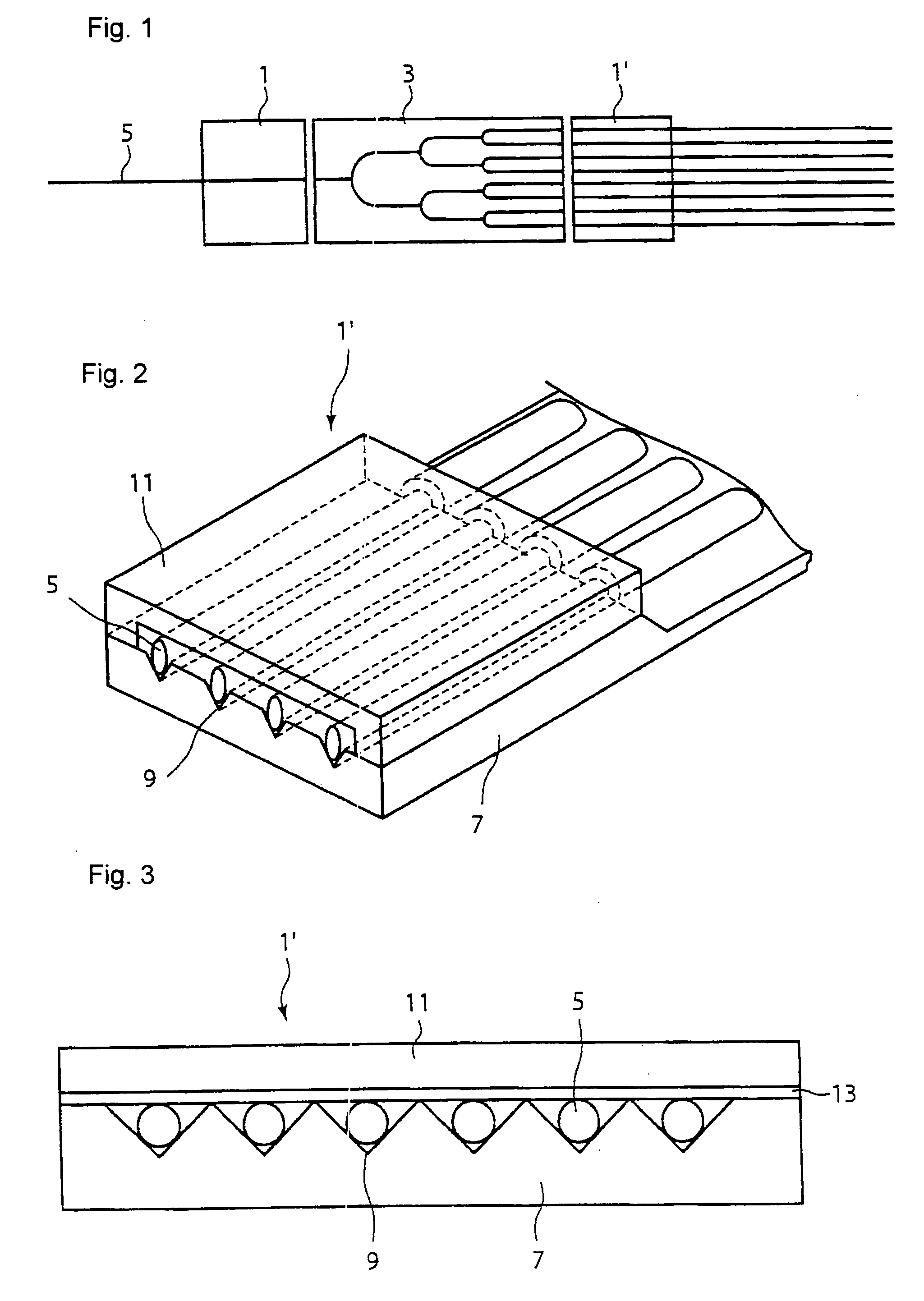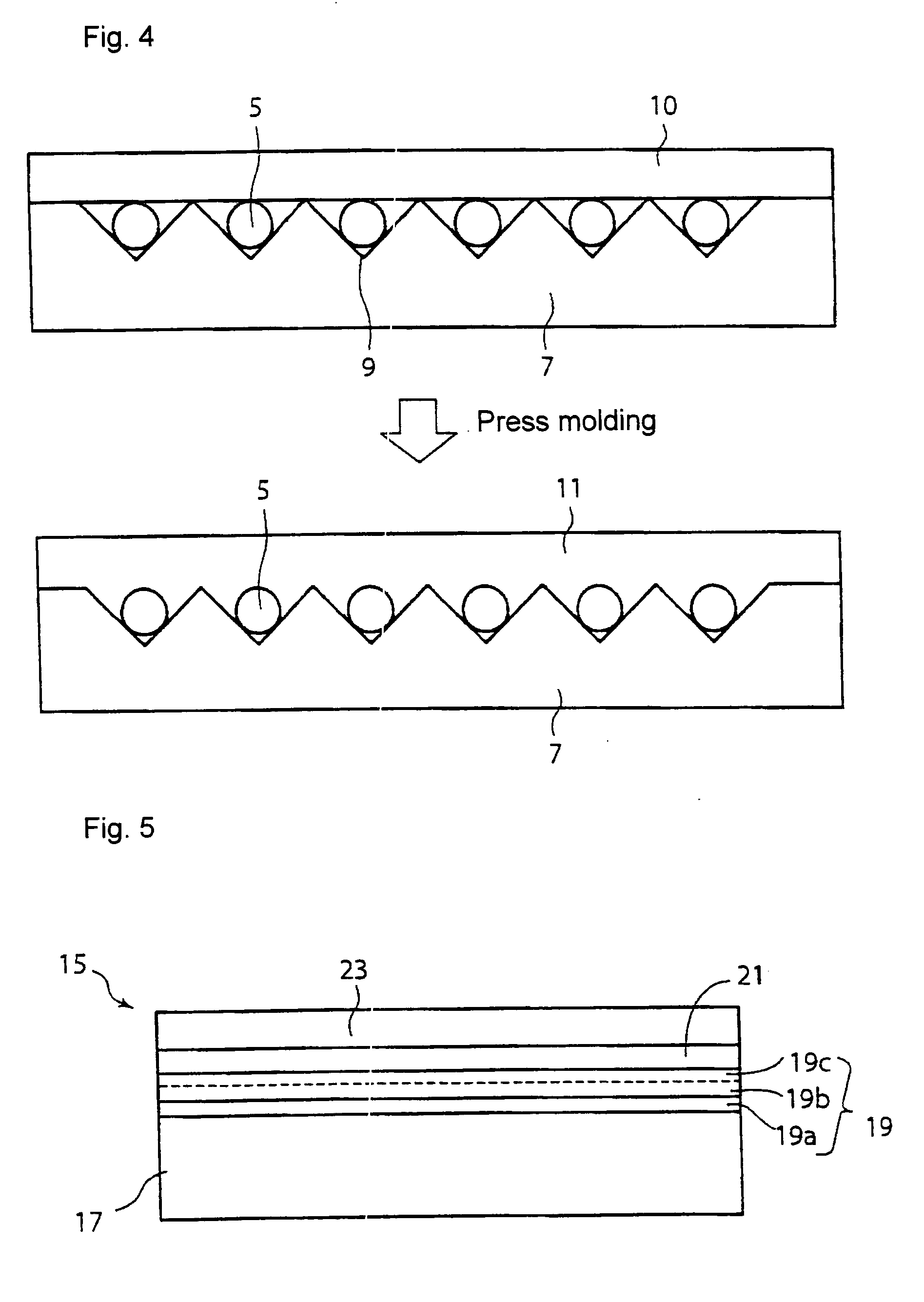Resin Composition for Optical Packaging Material and Process for Preparing the Same, and Optical Packaging Material, Optical Packaging Component, and Optical Module
- Summary
- Abstract
- Description
- Claims
- Application Information
AI Technical Summary
Benefits of technology
Problems solved by technology
Method used
Image
Examples
synthesis example 1
[0174]Phenol 432.9 g, benzoguanamine 172.2 g, and a 37% formaldehyde solution 179.2 g were charged into a 1 L four-neck flask equipped with a gas inlet, a Dean-Stark trap, and a stirring rod and ammonia water 9 mL was slow-added while stirring the white liquid at 60° C. in nitrogen current. When the reaction liquid became transparent, the liquid was heated to 80° C. and kept for 4 hours at that temperature while stirring, and then heated again. While collecting the produced water which started being distilled around 100° C. in the trap, the reaction liquid was heated to 180° C. and kept for 4 hours. After 160 g of water was collected, the water production was stopped and the reaction liquid was cooled to 60° C. Subsequently, methanol 100 g and acetic acid 8.3 g were added. Next, two PTFE tubes were inserted into the reaction liquid in the four-neck flask and tetramethoxysilane 210.1 g and water 99.4 g were added for 4 hours through the separate tubes by using roller pumps while keep...
synthesis example 2
[0175]p-xylene glycol 302.6 g, phenol 687.0 g, and p-toluenesulfonic acid 12.6 g were charged into a 2 L four-neck flask equipped with a gas inlet, a Dean-Stark trap, and a stirring rod and heating was started in nitrogen current. Around 115° C., water started being produced. While collecting the formed water in the trap, the reaction liquid was heated to 150° C. and kept for 6 hours. When water 79 g was collected, the water production was stopped and therefore, the reaction liquid was cooled to 60° C., and then diglyme 176 g was added. Next, two PTFE tubes were inserted into the reaction liquid in the four-neck flask and tetramethoxysilane 336.4 g and water 157.8 g were added for 4 hours through the separate tubes by using roller pumps while keeping the temperature at 20° C.
[0176]After the supply, the reaction liquid was kept at 60° C. for 4 hours. Further, the reaction liquid was heated again and continuously stirred to 180° C. in nitrogen current while collecting un-reacted water...
synthesis example 3
[0177]A cresol novolak type epoxy resin (trade name: EOCN-102S, manufactured by Nippon Kayaku Co., Ltd.; epoxy equivalent 210 g / mol) 168 g and ethylene glycol diacrylate 122.3 g were charged into a 500 mL four-neck flask equipped with a gas inlet, a Dean-Stark trap, and a stirring rod and dissolved while stirring at 80° C. Subsequently, 4-hydroxy-2,2,6,6-tetramethylpiperidin-1-oxyl 0.011 g and tetraphenylphosphonium bromide 1.01 g were added and acrylic acid 59.1 g was slow-added for 2 hours at 110° C. under air current. After the supply, the reaction liquid was stirred at 115° C. for 6 hours in air current and the reaction liquid was cooled to 40° C. after confirming the reaction acid value to be 7 mgKOH / g or lower. Next, two PTFE tubes were inserted into the reaction liquid in the four-neck flask and tetramethoxysilane 121.78 g and 5% ammonia water 57.6 g were added for 4 hours through the separate tubes by using roller pumps while keeping the temperature at 40° C. After the suppl...
PUM
| Property | Measurement | Unit |
|---|---|---|
| Fraction | aaaaa | aaaaa |
| Fraction | aaaaa | aaaaa |
| Fraction | aaaaa | aaaaa |
Abstract
Description
Claims
Application Information
 Login to View More
Login to View More - R&D
- Intellectual Property
- Life Sciences
- Materials
- Tech Scout
- Unparalleled Data Quality
- Higher Quality Content
- 60% Fewer Hallucinations
Browse by: Latest US Patents, China's latest patents, Technical Efficacy Thesaurus, Application Domain, Technology Topic, Popular Technical Reports.
© 2025 PatSnap. All rights reserved.Legal|Privacy policy|Modern Slavery Act Transparency Statement|Sitemap|About US| Contact US: help@patsnap.com



